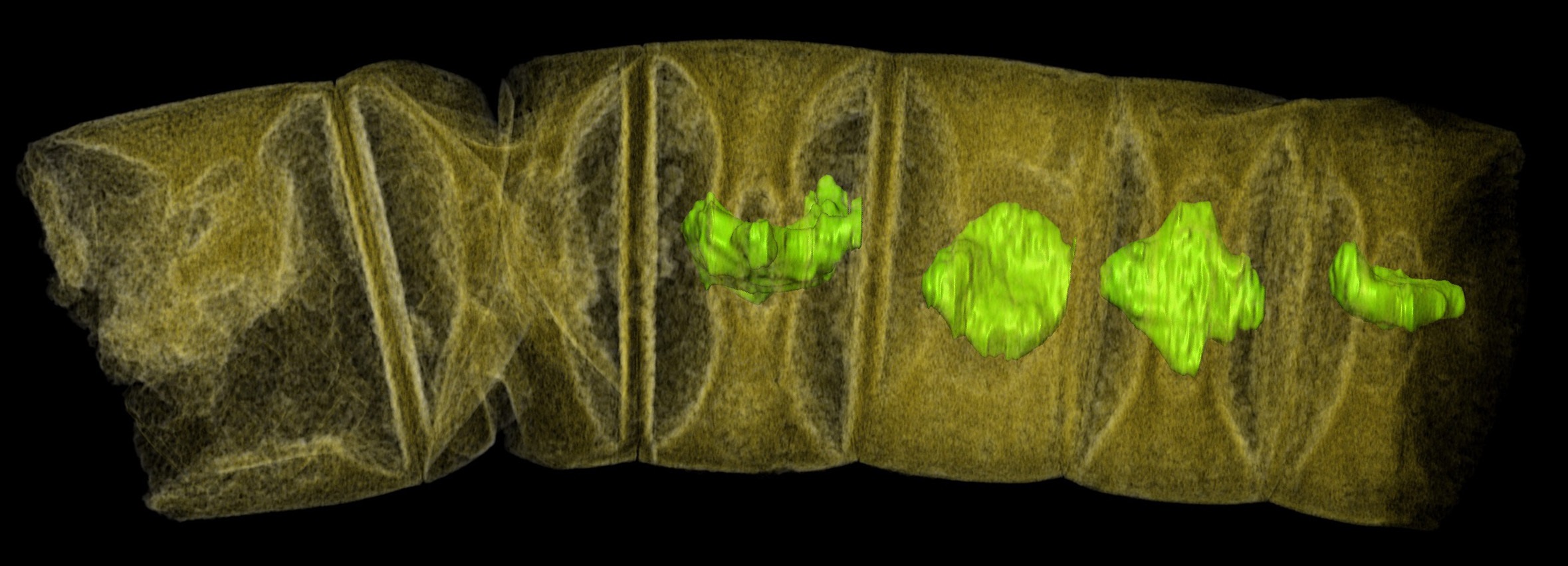1.6 Billion-Year-Old Specimens May Be Oldest Plant-Like Fossils

Scientists have discovered what may be the world’s oldest plant-like fossils, found in sedimentary rocks in central India. The preserved specimens are estimated to be 1.6 billion years old, and contain structures like those found in red algae.
Older fossils of early life on Earth exist, dating back 3.5 billion years, but they represent single-celled organisms that lack nuclei and other specialized cellular structures known as organelles.
The two types of fossils that researchers recently identified resembled red algae — one specimen was composed of filaments and another was made of more robust structures. The ancient specimens are 400 million years older than previous fossil algae discoveries, and hint that multicellular life evolved on Earth far earlier than was once thought. [In Images: The Oldest Fossils on Earth]
Algae belong to a group known as the eukaryotes, which includes all organisms with highly organized cells containing a nucleus. Like plants, algae perform photosynthesis, but they are not classified as plants. Rather, they are protists, a diverse group that includes single-celled and multicellular life.
Red algae, or rhodophytes, are found in coastal areas and along the continental shelf in oceans worldwide. They are known for causing the infamous "red tides," when ocean conditions allow certain types of the algae to multiply enough to change the water's appearance, tinting it shades of red. Toxins associated with this runaway algae growth, known as blooms, can cause massive die-offs in fish and the animals that eat them.
Researchers discovered the new fossils in sheets of microbial organisms preserved in rock, in a region that was formerly a shallow sea. Scans using synchrotron-generated X-ray tomographic microscopy — essentially, very high-energy X-rays — delivered 3D views of cellular composition in the specimens that closely resembled algae, particularly diamond-shaped structures similar to cellular parts that algae use for photosynthesis, the study authors reported.
Previously, the oldest known fossil algae specimens were dated to 1.2 billion years ago, making these new discoveries the oldest evidence of eukaryotic life. Fossils of early eukaryotes are extremely rare, and interpreting them can be challenging — which explains why study co-author Therese Sallstedt, a researcher with the Department of Palaeobiology at the Swedish Museum of Natural History, was so enthusiastic when she spotted the algae's distinctive structures.
Get the world’s most fascinating discoveries delivered straight to your inbox.
"I got so excited!" Sallstedt said in a statement. "I had to walk three times around the building before I went to my supervisor to tell him what I had seen."
The findings were published online today (March 14) in the journal PLOS Biology.
Original article on Live Science.

Mindy Weisberger is a science journalist and author of "Rise of the Zombie Bugs: The Surprising Science of Parasitic Mind-Control" (Hopkins Press). She formerly edited for Scholastic and was a channel editor and senior writer for Live Science. She has reported on general science, covering climate change, paleontology, biology and space. Mindy studied film at Columbia University; prior to LS, she produced, wrote and directed media for the American Museum of Natural History in NYC. Her videos about dinosaurs, astrophysics, biodiversity and evolution appear in museums and science centers worldwide, earning awards such as the CINE Golden Eagle and the Communicator Award of Excellence. Her writing has also appeared in Scientific American, The Washington Post, How It Works Magazine and CNN.


